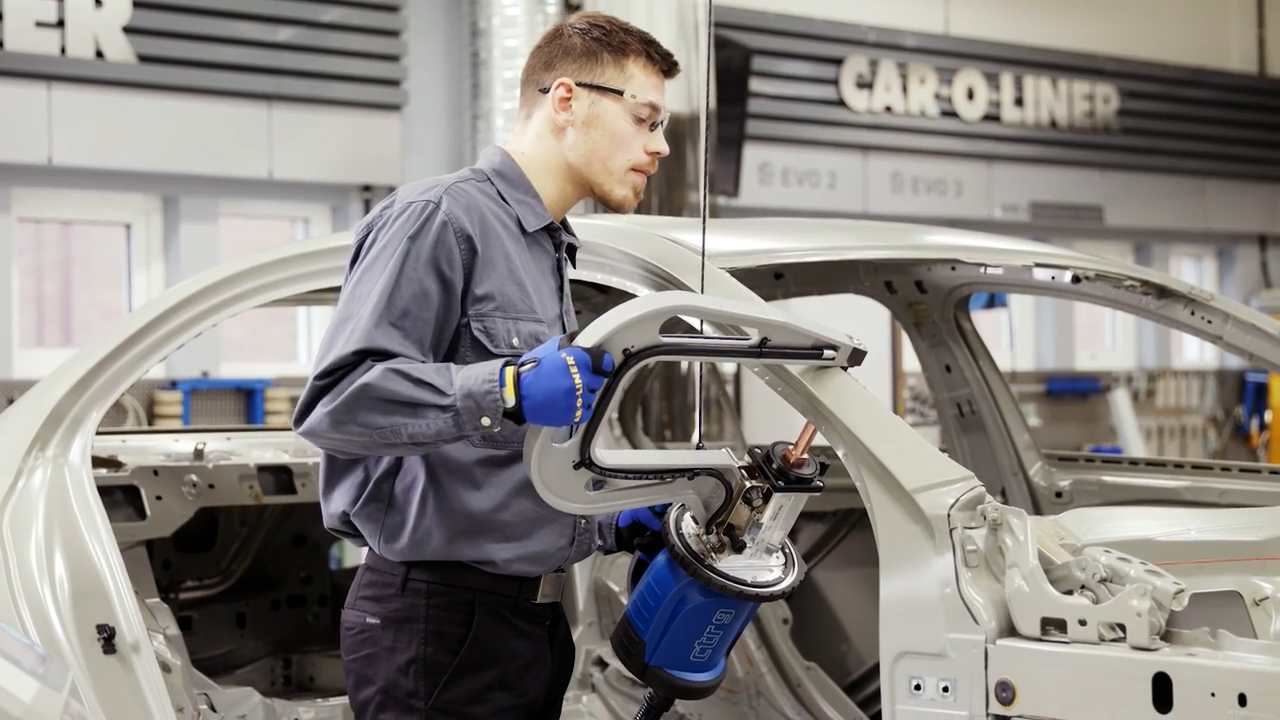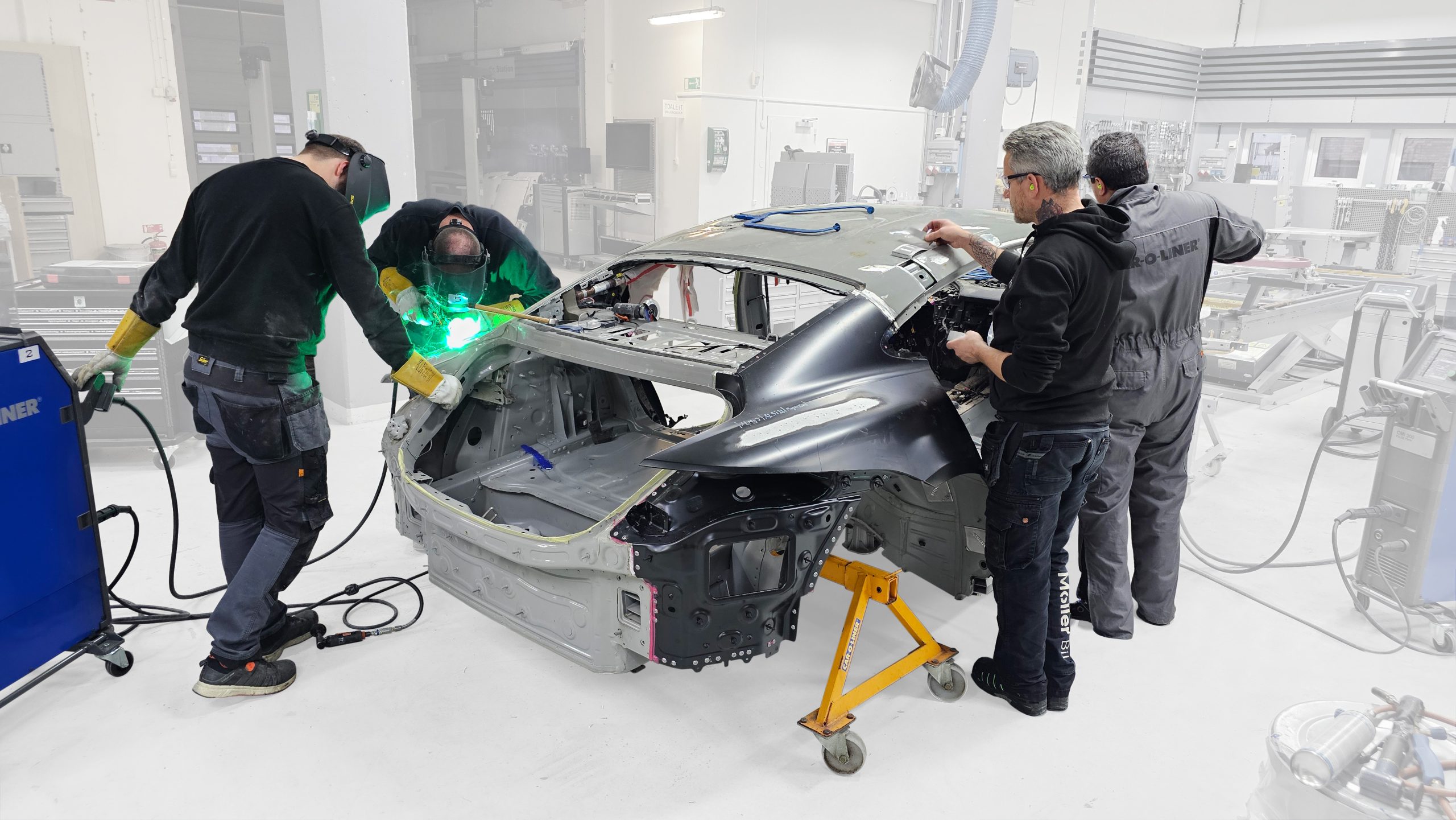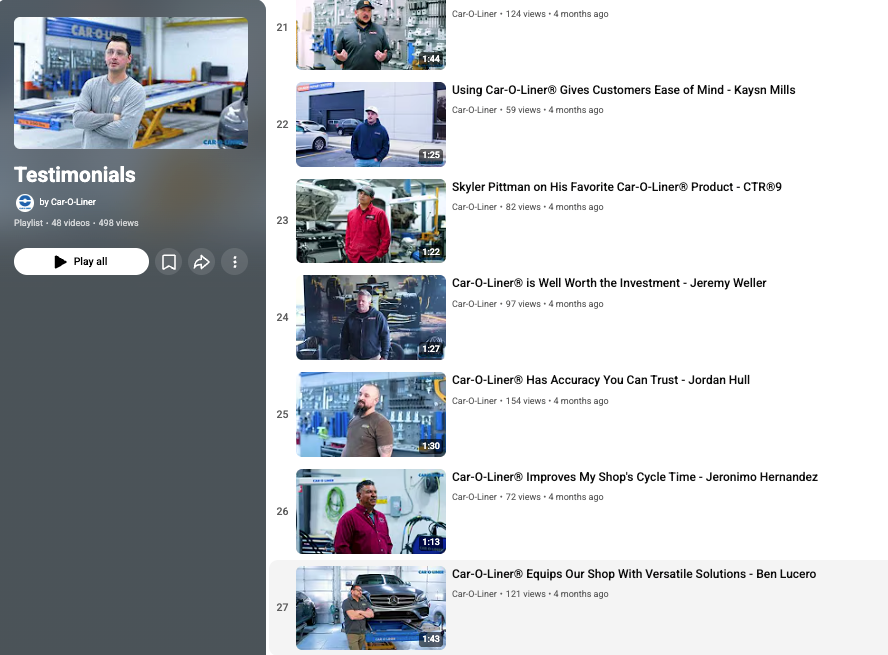Auto frame straightening is a critical repair process that restores a vehicle’s frame to its original specifications after damage. It is essential for maintaining the safety, structural integrity, and performance of a vehicle following a collision or other impact because structural damage can lead to poor deformation in the body structure but also issues such as misaligned wheels, uneven tire wear, and compromised handling, all of which affect both safety and functionality.
Professional structural repair is the proper way to address these problems, ensuring the vehicle meets OEM standards and performs as intended. Car-O-Liner, with over fifty years of experience, is a leading global provider of high-quality, technologically advanced collision repair equipment and systems. Our innovative solutions, technical development, training, and customer support have set industry standards.
This guide outlines what frame straightening involves, common causes of structural damage, and why professional expertise and equipment are crucial for effective repairs.
What is Auto Frame Straightening?
Auto frame straightening is a precise repair process designed to restore a vehicle’s damaged frame to its original alignment and manufacturer specifications. This process is essential after collisions or impacts that compromise the vehicles’ structural integrity, ensuring the vehicle can perform safely and reliably. By using advanced equipment and techniques, technicians realign the frame, correcting bends, twists, or misalignments caused by accidents.
The purpose of frame straightening extends beyond aesthetics, it impacts safety and functionality. A properly aligned frame prevents further stress on critical components like the SRS-systems, suspension, steering, and body panels. Additionally, it ensures that the vehicle’s deformations zones (crash boxes), which are designed to absorb impact during a collision, perform as intended, providing optimal protection to occupants.
Types of Car Frames
Modern vehicles primarily use two types of frames: unibody and full frames. To determine the appropriate repair method, their structural differences make a big difference.
- Unibody Frames: Commonly found in passenger cars, crossovers, and smaller SUVs, unibody frames integrate the frame and body into a single structure. This design is lighter, improves fuel efficiency, and enhances handling. However, because of their integrated nature, repairing unibody frames requires specialized equipment to address localized damage without compromising the overall structure.
- Body-on-Frame: Often used in trucks, full-size SUVs, and some commercial vehicles, body-on-frames consist of two parallel rails connected by cross members. This traditional design offers superior strength and durability, making it ideal for vehicles subjected to heavy loads or rugged conditions. Repairing a body-on-frame involves addressing damage to its rail and cross-member components.
Common Causes and Signs of Frame Damage
Frame damage can result from a variety of scenarios, each impacting the structural integrity and functionality of a vehicle. Understanding these causes of damage is the first step in addressing the issue effectively. The most common cause of frame damage is accidents, whether minor fender benders or severe crashes. Even low-speed impacts can result in misalignments or bending, while high-speed collisions may twist or deform the frame beyond repair.
We find that vehicles subjected to rugged terrain, such as potholes, uneven ground, or debris, experience frame stress more often. Over time, repeated impacts in off-road conditions can weaken the structural integrity of both unibody and body-on-frames. Normal usage can also lead to gradual frame damage. Factors like rust and exposure to harsh weather conditions make it more susceptible to misalignment or breakage on the suspension.

Identifying Frame Damage
Frame damage is not always immediately visible but can manifest in several ways such as:
- Uneven Tire Wear: Unequal pressure distribution due to a misaligned frame causes certain areas of the tire to wear faster. Patterns such as feathering or camber wear often indicate underlying structural issues.
- Misaligned Wheels: A damaged unibody frame often results in wheels that do not align properly. This can cause the vehicle to pull to one side while driving or lead to poor handling during turns.
- Gaps in Body Panels: Visible gaps or misaligned body panels, such as uneven spacing between doors, the hood, or the trunk, may suggest that the frame is bent or twisted.
- Unusual Noises: Rattling, creaking, or other irregular sounds coming from the vehicle, especially after an impact, may indicate hidden structural damage.
The Role of Professional Inspections
Not all damage is obvious to the untrained eye. Hidden issues, such as hairline cracks or internal misalignments, require advanced diagnostic tools for detection. Professional inspections utilize technologies like laser measuring systems to pinpoint damage with high precision. By recognizing the causes and signs of frame damage early, vehicle owners and technicians can take proactive steps to address the problem.
The Frame Straightening Process
Restoring a vehicle’s damaged frame is a meticulous process that combines expert knowledge and advanced technology. Every step is critical to ensuring the damaged vehicle is realigned to meet original manufacturer specifications, restoring both safety and performance. Here’s a detailed breakdown of how frame straightening is performed.
Step 1 – Initial Damage Assessment
The process begins with a thorough evaluation of the frame’s condition. Technicians utilize advanced measuring systems to identify misalignments, bends, or structural deformities. These systems compare the current dimensions of the frame to the manufacturer’s specifications, allowing for a precise understanding of the damage. This assessment is the foundation for an effective repair plan.
Step 2 – Securing the Vehicle
Once the extent of the damage is determined, the vehicle is mounted onto a frame machine or repair bench. Specialized clamps and anchoring systems secure the vehicle in place, ensuring stability throughout the repair process. Proper stabilization is essential to avoid introducing new stress points during realignment.
Step 3 – Realigning the Frame
Technicians use hydraulic pulling systems to apply controlled force, gradually reshaping the frame to its original alignment. These systems are designed to provide pinpoint accuracy, correcting bends, twists, or other deformations. Technicians should be careful and precise so the metal is not overstressed, preserving the frame’s structural integrity.
Step 4 – Verification and Adjustments
After the initial realignment, advanced measuring tools are used to verify the accuracy of the repair. If discrepancies remain, technicians make additional adjustments to ensure the frame meets OEM standards. This step is repeated until all measurements confirm the frame is restored to its original condition.
Advanced Tools and Technologies in Structural Repair
Professional frame straightening relies on cutting-edge tools and systems designed to enhance both precision and efficiency. These technologies ensure that every repair meets the highest standards of safety and quality.
Frame machines, such as Car-O-Liner’s BenchRack systems, are essential for stabilizing and realigning vehicles. Equipped with powerful hydraulic pullers, these machines provide the controlled force needed to restore even severely damaged frames. Their versatility allows technicians to work on a wide range of vehicles, from passenger cars to heavy-duty trucks.
Accurate measurement is critical to effectively perform structual repair. Tools like Car-O-Tronic systems combine technology with comprehensive vehicle databases, enabling technicians to identify misalignments with unparalleled precision. These systems also document the repair process, ensuring full compliance with OEM standards.
Laser-guided measuring systems offer real-time feedback, mapping the frame in three dimensions to highlight areas of deformation. The precision here minimizes the risk of over-correction and ensures that adjustments are targeted and effective. Also, software solutions like Vision2 integrate seamlessly with measuring and frame machines to guide technicians through each stage, from assessment to verification, streamlining the entire repair process.
Why Professional Frame Straightening Matters
Investing in professional frame straightening ensures that the vehicle’s structural integrity and performance are fully restored. For drivers, this means not only safer road travel but also extended vehicle lifespan and peace of mind knowing the car can handle future challenges effectively. A compromised frame weakens the car’s ability to absorb impact forces, increasing the risk of injury in collisions. Additionally, unresolved frame issues can lead to steering instability, uneven tire wear, and suspension problems, all of which affect drivability and safety.
Failing to address vehicle structual damage promptly can also result in costly long-term repairs. Misaligned frames place undue stress on the drivetrain and suspension, causing these components to wear out faster. Furthermore, visible damage such as misaligned panels or poor alignment can diminish the vehicle’s value and functionality, compounding the problem over time.
Advanced tools, including hydraulic pullers and laser guided measuring systems, allow technicians to accurately assess and repair structural damage. These technologies minimize the risk of over correction and ensure the frame is realigned precisely without weakening the metal. Proper frame alignment preserves the effectiveness of crumple zones and ensures the car performs as intended. Trained technicians, equipped with cutting-edge tools and software, provide the precision and reliability needed for complex frame repair work.
Conclusion
Auto frame straightening plays a vital role in ensuring a vehicle’s safety, performance, and structural integrity after damage. From realigning misaligned frames to restoring critical components, this process protects both the functionality and the longevity of the vehicle. Neglecting frame repairs not only compromises safety but also leads to costly complications down the line.
Professional frame straightening, conducted by trained technicians using advanced tools and techniques, is the most reliable solution for addressing structural issues. With the help of precision equipment like frame machines and laser-guided measuring systems, repairs are executed accurately, meeting OEM specifications and preserving safety features.
Car-O-Liner’s industry-leading tools and state-of-the-art auto body measuring systems, set the standard for high-quality collision repair. By integrating innovative solutions and over five decades of expertise, Car-O-Liner supports workshops in delivering efficient, precise, and reliable frame straightening services.
For vehicle owners, seeking professional repairs ensures safety on the road and peace of mind. For auto body repair shops, investing in advanced equipment enhances both repair quality and customer satisfaction. Choose Car-O-Liner for trusted solutions that uphold the highest standards in collision repair.


